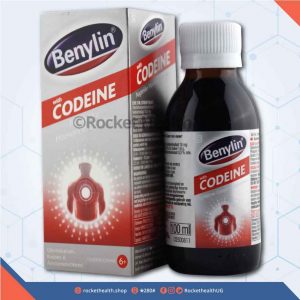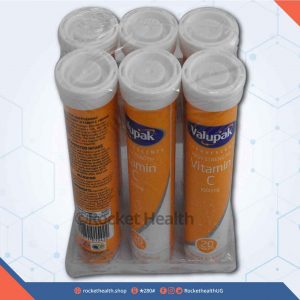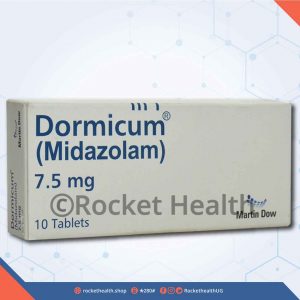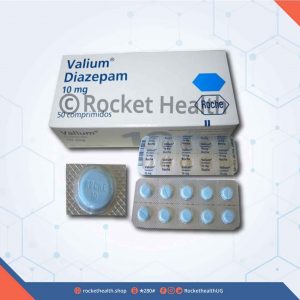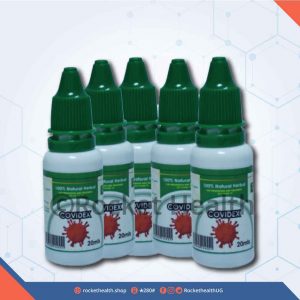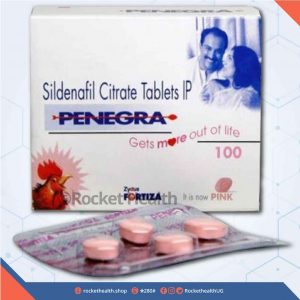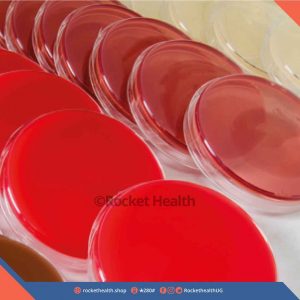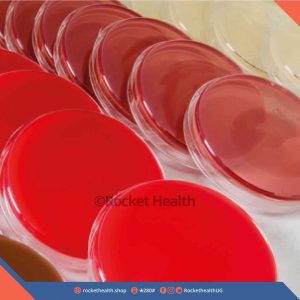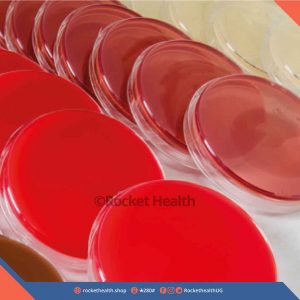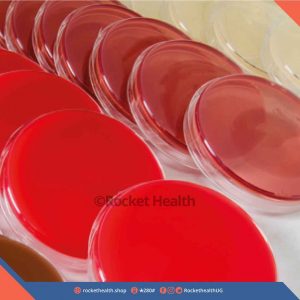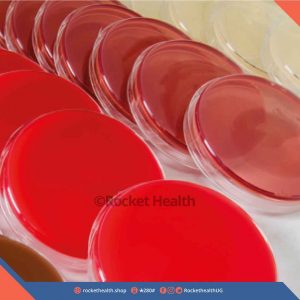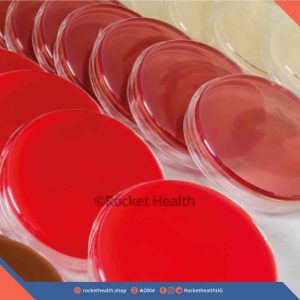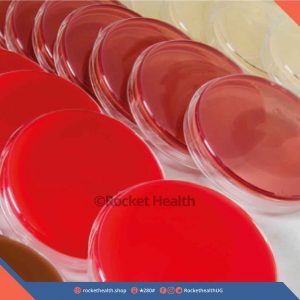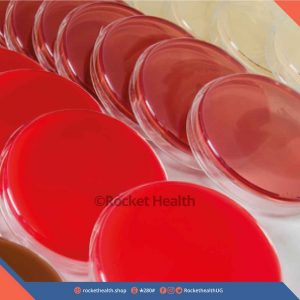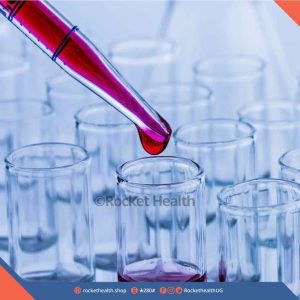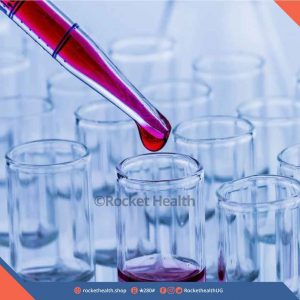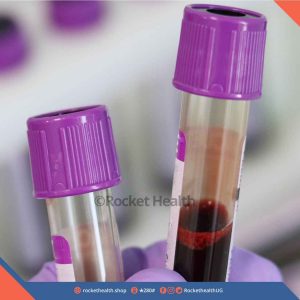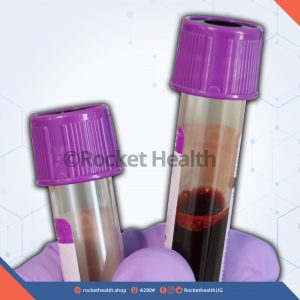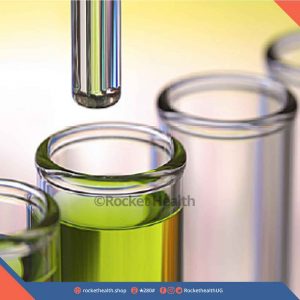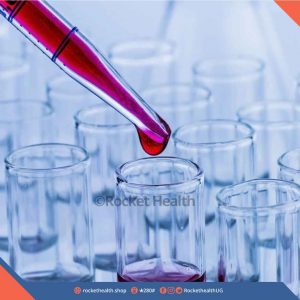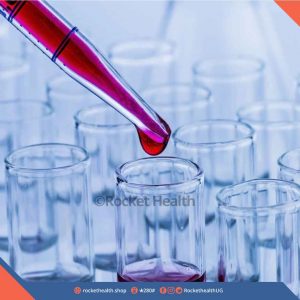No products in the cart.
Best Seller Items
-
Benylin with codeine
Benylin Codeine Syrup helps you to clear dry and stubborn coughs, providing relief from persistant coughing
30,000UGXBenylin with codeine
30,000UGX -
Valupak Vitamin C Effervescent Tablets 1000mg 1 tin
AvaCare’s Simple Health Vitamin C contains 20 Orange Flavoured Effervescent Tablets.
AvaCare’s Effervescent Vitamin C has been designed so you get a massive boost of well-needed Vitamin C as vitamin C helps support the normal function of your Immune and Nervous Systems, giving your immune system an immediate boost. It can also help reduce the effects of Tiredness and Fatigue
30,000UGX -
Midazolam 7.5mg Dormicum tablets 10’s
Midazolam Tablet is a prescription medicine used as a sedative or for conscious sedation before diagnostic or therapeutic procedures. It relieves anxiety and muscle tensions, thus making the person comfortable before investigations or minor surgical or dental procedures.Some common side effects of this medicine include memory impairment, tiredness, depression, and confusion. It may cause dizziness
4,500UGX -
Diazepam 10mg Valium Tablets
Diazepam tablets is used to treat anxiety, alcohol withdrawal and seizures. it is used to relieve muscle spasms and to provide sedation before medical procedures.
2,500UGXDiazepam 10mg Valium Tablets
2,500UGX -
COVIDEX (Pack of 5 bottles)
Get 5 units of COVIDEX at Ugx 65,000
Made by Jena Herbals Uganda Limited, Covidex is approved by NDA to be used as a supportive treatment for COVID-19 in Uganda
Ingredients
- Extract of Zanthoxylum gilletii (East African satinwood),
- Warbugia Ugandensis
- Sodium chloride
Mechanism of Action:
- Inhibits SARS CoV-2 Virus growth
- Anti-inflammatory effects
- Immune modulatory effects
- Anti-hyperglycemic effects
Dose
- Adults: 6 drops in the mouth, 3 times a day.
- Children 5 – 12 years: 3 drops in the mouth, 3 times a day
- Children below 5 years: 1 drop in the mouth, 3 times a day
50,000UGXCOVIDEX (Pack of 5 bottles)
50,000UGX -
Sildenafil 50mg PENEGRA 50 Tablet 4’s
Penegra is used to treat erectile dysfunction (impotence) in men. This helps men to get or maintain an erection. It belongs to a group of medicines known as phosphodiesterase type 5 (PDE 5) inhibitors. It works by increasing blood flow to the penis.
1,200UGX
-
-
Swab culture and sensitivity
A culture is a test to find the exact germs (such as bacteria or a fungus) that is causing an infection. A sensitivity test checks to see what kind of medicine, such as an antibiotic, will work best to treat the illness or infection.
Throat swab, Pus swab, Wound swab, Environmental swab.
Do not take antibiotics for atleast 3 days before the test.
A test that demonstrates the presence of disease causing organisms in the body. Culture and sensitivity demonstrates the presence of disease causing organisms in the body and to identify which medicines can best eliminate them. In this test, disease causing organisms (most commonly bacteria and fungi) are grown in the laboratory (cultured) and medicines tried on them to determine which ones best work on them (sensitivity testing).
60,000UGXSwab culture and sensitivity
60,000UGX -
Ascitic fluid culture and sensitivity
A culture is a test to find the exact germs (such as bacteria or a fungus) that is causing an infection. A sensitivity test checks to see what kind of medicine, such as an antibiotic, will work best to treat the illness or infection.
Ascitic fluid (abdominal fluid).
Do not take antibiotics for atleast 3 days before the test.
A test that demonstrates the presence of disease causing organisms in the body. Culture and sensitivity demonstrates the presence of disease causing organisms in the body and to identify which medicines can best eliminate them. In this test, disease causing organisms (most commonly bacteria and fungi) are grown in the laboratory (cultured) and medicines tried on them to determine which ones best work on them (sensitivity testing).
60,000UGXAscitic fluid culture and sensitivity
60,000UGX -
CSF Culture and sensitivity
A culture is a test to find the exact germs (such as bacteria or a fungus) that is causing an infection. A sensitivity test checks to see what kind of medicine, such as an antibiotic, will work best to treat the illness or infection.
Celebralspinal fluid (CSF).
Do not take antibiotics for atleast 3 days before the test.
A test that demonstrates the presence of disease causing organisms in the body. Culture and sensitivity demonstrates the presence of disease causing organisms in the body and to identify which medicines can best eliminate them. In this test, disease causing organisms (most commonly bacteria and fungi) are grown in the laboratory (cultured) and medicines tried on them to determine which ones best work on them (sensitivity testing).
100,000UGXCSF Culture and sensitivity
100,000UGX -
Pleural fluid culture and sensitivity
A culture is a test to find the exact germs (such as bacteria or a fungus) that is causing an infection. A sensitivity test checks to see what kind of medicine, such as an antibiotic, will work best to treat the illness or infection.
Pleural fluid (fluid in the chest).
Do not take antibiotics for atleast 3 days before the test.
A test that demonstrates the presence of disease causing organisms in the body. Culture and sensitivity demonstrates the presence of disease causing organisms in the body and to identify which medicines can best eliminate them. In this test, disease causing organisms (most commonly bacteria and fungi) are grown in the laboratory (cultured) and medicines tried on them to determine which ones best work on them (sensitivity testing).
60,000UGXPleural fluid culture and sensitivity
60,000UGX -
Sputum ZN, Gram stain + culture and sensitivity
A culture is a test to find the exact germs (such as bacteria or a fungus) that is causing an infection. A sensitivity test checks to see what kind of medicine, such as an antibiotic, will work best to treat the illness or infection.
Sputum.
Do not take antibiotics for atleast 3 days before the test.
A test that demonstrates the presence of disease causing organisms in the body. Culture and sensitivity demonstrates the presence of disease causing organisms in the body and to identify which medicines can best eliminate them. In this test, disease causing organisms (most commonly bacteria and fungi) are grown in the laboratory (cultured) and medicines tried on them to determine which ones best work on them (sensitivity testing).
70,000UGX -
Stool analysis + Culture and sensitivity
A culture is a test to find the exact germs (such as bacteria or a fungus) that is causing an infection. A sensitivity test checks to see what kind of medicine, such as an antibiotic, will work best to treat the illness or infection.
Stool.
Do not take antibiotics for atleast 3 days before the test.
A test that demonstrates the presence of disease causing organisms in the body. Culture and sensitivity demonstrates the presence of disease causing organisms in the body and to identify which medicines can best eliminate them. In this test, disease causing organisms (most commonly bacteria and fungi) are grown in the laboratory (cultured) and medicines tried on them to determine which ones best work on them (sensitivity testing).
60,000UGXStool analysis + Culture and sensitivity
60,000UGX -
Blood culture and sensitivity (Anaerobic)
A culture is a test to find the exact germs (such as bacteria or a fungus) that is causing an infection. A sensitivity test checks to see what kind of medicine, such as an antibiotic, will work best to treat the illness or infection.
Blood.
Do not take antibiotics for atleast 3 days before the test.
A test that demonstrates the presence of disease causing organisms in the body. Culture and sensitivity demonstrates the presence of disease causing organisms in the body and to identify which medicines can best eliminate them. In this test, disease causing organisms (most commonly bacteria and fungi) are grown in the laboratory (cultured) and medicines tried on them to determine which ones best work on them (sensitivity testing).
82,000UGX -
Blood culture and sensitivity (Aerobic)
A culture is a test to find the exact germs (such as bacteria or a fungus) that is causing an infection. A sensitivity test checks to see what kind of medicine, such as an antibiotic, will work best to treat the illness or infection.
Blood.
Do not take antibiotics for atleast 3 days before the test.
A test that demonstrates the presence of disease causing organisms in the body. Culture and sensitivity demonstrates the presence of disease causing organisms in the body and to identify which medicines can best eliminate them. In this test, disease causing organisms (most commonly bacteria and fungi) are grown in the laboratory (cultured) and medicines tried on them to determine which ones best work on them (sensitivity testing).
72,000UGXBlood culture and sensitivity (Aerobic)
72,000UGX -
Troponin T
Troponin tests measure the level of cardiac-specific troponin in the blood to help detect heart injury or recent heart attack.
Blood.
No specific patient preparation protocol required. Inform the doctor if you are on any medications, have any allergies or underlying medical conditions before this test.
Normally, troponin is present in very small to undetectable quantities in the blood. When there is damage to heart muscle cells, troponin is released into the blood. The more damage there is, the greater the concentration in the blood. Primarily, troponin tests are used to help determine if an individual has suffered a heart attack. They may also be helpful in evaluating someone for other forms of heart injury. When a person has a heart attack, levels of cardiac-specific troponins I and T can become elevated in the blood within 3 or 4 hours after injury and may remain elevated for 10 to 14 days
60,000UGXTroponin T
60,000UGX -
Troponin I
Troponin tests measure the level of cardiac-specific troponin in the blood to help detect heart injury or recent heart attack.
Blood.
No specific patient preparation protocol required. Inform the doctor if you are on any medications, have any allergies or underlying medical conditions before this test.
Troponins are a group of proteins found in skeletal and heart (cardiac) muscle fibers that regulate muscular contraction. Normally, troponin is present in very small to undetectable quantities in the blood. When there is damage to heart muscle cells, troponin is released into the blood. The more damage there is, the greater the concentration in the blood. Primarily, troponin tests are used to help determine if an individual has suffered a heart attack. They may also be helpful in evaluating someone for other forms of heart injury. When a person has a heart attack, levels of cardiac-specific troponins I and T can become elevated in the blood within 3 or 4 hours after injury and may remain elevated for 10 to 14 days.
60,000UGXTroponin I
60,000UGX -
Serum Crag
Serum Crag is a test that detects cryptococcal antigen (abbreviated “CrAg”) in blood, an indicator of cryptococcal meningitis infection.
Blood.
No specific patient preparation protocol required. Inform the doctor if you are on any medications, have any allergies or underlying medical conditions before this test.
Cryptococcal infection usually presents as meningitis, which is a swelling of the meninges,the tissues that protect the brain and spinal cord. It is caused by C. neoformans which enters the human body via the respiratory tract. Elimination of C. neoformans is through cell mediated immunity, with the participation of neutrophils, macrophages and cytotoxic T lymphocytes. In the face of immunodeficiency(HIV infection, pregnancy etc), control of the infection fails, the fungus may then disseminate to the central nervous system or other organs. Definitive diagnosis is confirmed by the culture of specimens, often the cerebrospinal fluid (CSF) or blood, and sometimes in respiratory secretions The condition requires hospitalization and treatment with the intravenous (IV) antifungal medication amphotericin B.
35,000UGXSerum Crag
35,000UGX -
Reticulocyte Count
A reticulocyte test determines the number and/or percentage of reticulocytes( Immature Red Blood Cells) in the blood and is a reflection of recent bone marrow function or activity.
Blood.
No specific patient preparation protocol required. Inform the doctor if you are on any medications, have any allergies or underlying medical conditions before this test.
Red blood cells are produced in the bone marrow, where blood-forming (hematopoietic) stem cells differentiate and develop, eventually forming reticulocytes and finally becoming mature RBCs. A variety of diseases and conditions i.e hemorrhage, hemolysis, bone marrow disorder, kidney disease can affect the production of new RBCs and/or their survival, in addition to those conditions that may result in significant bleeding. These conditions may lead to a rise or drop in the number of RBCs and may affect the reticulocyte count.
25,000UGXReticulocyte Count
25,000UGX -
Luitenising Hormone
This test measures the amount of luteinizing hormone in the blood. (LH) is a hormone associated with reproduction. Its stimulation of either ovary or testicles results in the release of an egg from the ovary (ovulation) in women or testosterone production in men.
Blood.
Early morning samples are preferred. A woman’s sample should be collected at specific times during her menstrual cycle. Inform the doctor if you are on any medications, have any allergies or underlying medical conditions before this test.
LH is produced by the pituitary gland. In women of childbearing age, several hormones (LH, follicle-stimulating hormone (FSH), estrogen and progesterone) rise and fall in a specific sequence during each menstrual cycle. In men, LH stimulates Leydig cells in the testicles to produce testosterone. In infants and children, LH levels rise shortly after birth and then fall to very low levels. Results of an LH test are typically considered with results of other hormone tests, such as FSH, estrogens, and/or testosterone.
50,000UGXLuitenising Hormone
50,000UGX -
Hepatitis B Core Antibody
The test is used to find out whether you are having an active infection with the Hepatitis B virus (HBV).
Blood.
No specific patient preparation protocol required. Inform the doctor if you are on any medications, have any allergies or underlying medical conditions before your this test
Hepatitis B Virus has a central core and a surrounding envelope. Your immune system makes IgM antibodies to the core of HBV during the active stage of infection.The presence of anti-HBc indicates previous or ongoing infection with hepatitis B virus in an undefined time frame. IgM antibody to hepatitis B core antigen (IgM anti-HBc): Positivity indicates recent infection with hepatitis B virus (<6 mos). Its presence indicates acute infection
50,000UGXHepatitis B Core Antibody
50,000UGX -
Free T4
This is a test used to evaluate the proper functioning of the thyroid gland and monitor thyroid treatment.
Blood.
If you take thyroid hormone as treatment for thyroid disease, it is recommended that your blood sample be drawn before you take your dose for that day. Acute illness may also affect thyroid testing results so it is generally recommended that thyroid testing be avoided in hospitalized patients. Inform the doctor if you are on any medications, have any allergies or underlying medical conditions before this test.
Most of the hormone produced by the thyroid is T4. This hormone is relatively inactive, but it is converted into the much more active T3 in the liver and other tissues. If the thyroid gland does not produce sufficient T4 and T3 (underactive thyroid), due to thyroid dysfunction or to insufficient TSH, then the affected person experiences symptoms of hypothyroidism such as weight gain, dry skin, cold intolerance, irregular menstruation, and fatigue. If the thyroid gland produces too much T4 and T3, the affected person may experience symptoms associated with overactive thyroid (hyperthyroidism), such as rapid heart rate, anxiety, weight loss, difficulty sleeping, tremors in the hands, and puffiness around dry, irritated eyes and in some cases, bulging eyes.
45,000UGXFree T4
45,000UGX










